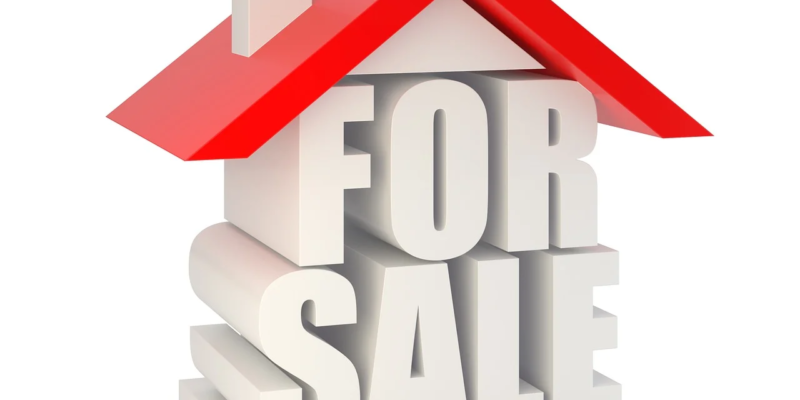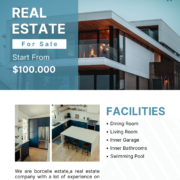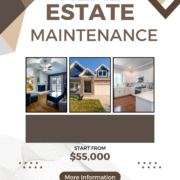
As a homeowner, one of the most significant decisions you’ll face is when to sell your property. However, before putting your home on the market, it’s important to consider this critical question, “How can I increase the value of my home before selling?” and consider possible strategies that can boost its value.
- Why Should You Increase the Value of Your Home Before Selling?
- How Can I Increase the Value of My Home Before Selling? Effective Strategies to Boost Your Home’s Value
- Assessing Your Home’s Current Value
- Tips for Increasing Your Home’s Value
- Home Improvements That Add Value Before You Sell
- How to Increase Your Home’s Value Without Breaking the Bank
- Curb Appeal: Enhancing Your Home’s Exterior
- Updating Your Kitchen and Bathrooms for Maximum Impact
- Improving Energy Efficiency to Attract Buyers
- Adding Square Footage and Functional Living Spaces
- Hiring Professionals vs. DIY: What’s the Best Approach?
- Staging Your Home for a Quick Sale
- Conclusion
Why Should You Increase the Value of Your Home Before Selling?
A well-prepared and updated home not only attracts potential buyers but also commands a higher selling price, ultimately leading to a more profitable sale.
In today’s competitive real estate market, buyers are looking for properties that are move-in ready and require minimal work.
By investing time and effort into enhancing your home’s appeal, you can differentiate your property from the competition and maximize your return on investment.
Whether you’re planning to sell soon or simply want to maintain your home’s value, implementing effective strategies to boost its worth is a wise decision.
In this blog, I’ll share proven strategies that have helped numerous homeowners achieve their desired selling price.
How Can I Increase the Value of My Home Before Selling? Effective Strategies to Boost Your Home’s Value
Assessing Your Home’s Current Value
Before embarking on any home improvement projects or implementing strategies to increase your home’s value, it’s crucial to understand its current market value. This baseline assessment will help you make informed decisions about where to focus your efforts and allocate your resources effectively.
One approach is to hire a professional real estate appraiser who can provide an objective and detailed evaluation of your home’s value.
Alternatively, you can research recent sales of comparable properties in your neighborhood, known as “combs,”, to gain insights into the local market and pricing trends.
By assessing your property’s current value, you will identify areas that may require attention and prioritize the improvements that will yield the highest return on investment.
Tips for Increasing Your Home’s Value
Enhancing your home’s value requires a strategic approach that considers both cosmetic improvements and functional upgrades.
Here are some tips to help you get started.
1. Prioritize Curb Appeal
First impressions are crucial in real estate. Ensure your home’s exterior is well-maintained, with a fresh coat of paint, tidy landscaping, and an inviting entrance.
2. Update Kitchens and Bathrooms
These high-traffic areas significantly impact a home’s perceived value. Consider renovating or refreshing these spaces with modern fixtures, updated appliances, and stylish finishes.
3. Improve Energy Efficiency
Energy-efficient homes are not only environmentally friendly but also appealing to buyers seeking to reduce utility costs.
Explore options such as upgrading insulation, replacing windows, and installing energy-efficient appliances.
4. Address Necessary Repairs
Attend to any outstanding repairs or maintenance issues, such as leaky faucets, cracked tiles, or damaged drywall. These seemingly minor issues can create a negative impression and deter potential buyers.
5. Enhance Lighting and Ambiance
Proper lighting can significantly influence a home’s atmosphere. Consider installing new light fixtures, adding skylights, or strategically placing mirrors to create a brighter and more inviting living space.
Remember, the key is to strike a balance between making improvements that add value and avoiding over-customization that may not appeal to a broad range of buyers.
Home Improvements That Add Value Before You Sell
Certain home improvements have a proven track record of increasing a property’s value and attracting buyers.
Here are some high-impact projects to consider.
1. Kitchen Remodel
A modern, functional, and visually appealing kitchen is a top priority for many buyers. Updating cabinets, countertops, appliances, and flooring can significantly enhance your kitchen’s appeal and add considerable value to your home.
2. Bathroom Renovations
Outdated bathrooms can be a major turnoff for potential buyers. Renovating bathrooms with stylish fixtures, modern tile work, and updated lighting can create a spa-like atmosphere and increase your home’s perceived value.
3. Finished Basement or Attic Conversion
Adding livable square footage by finishing a basement or converting an attic into a functional living space can substantially increase your home’s value and appeal to buyers seeking additional living or recreational areas.
4. Deck or Patio Addition
Outdoor living spaces have become increasingly popular, and adding a well-designed deck or patio can enhance your home’s aesthetic appeal and provide an attractive entertaining area.
5. Landscaping and Outdoor Enhancements
Investing in professional landscaping, installing a water feature or outdoor lighting, or creating a low-maintenance garden can highly improve your home’s curb appeal. It can also attract buyers seeking a beautiful outdoor oasis.
These improvements can be costly, but they often provide a substantial return on investment when it comes time to sell your home. It’s crucial to research and prioritize projects that align with your local market’s preferences and trends.
How to Increase Your Home’s Value Without Breaking the Bank
Not all home improvements require a substantial financial investment. There are numerous cost-effective ways to enhance your home’s value without breaking the bank.
Here are some budget-friendly strategies to consider:
1. Fresh Paint
A fresh coat of paint can instantly brighten and refresh any room, creating a clean and updated look. Opt for neutral colors that appeal to a wide range of buyers.
2. Replace Hardware and Fixtures
Updating cabinet hardware, light fixtures, faucets, and color handles with modern, stylish alternatives can instantly elevate the overall aesthetic of your home without a major renovation.
3. Declutter and Organize
A well-organized and clutter-free home not only appears more spacious but also allows potential buyers to envision themselves living in the space more easily.
4. Deep Cleaning
A thorough deep cleaning, including carpets, windows, and hard-to-reach areas, can make your home feel refreshed and well-maintained.
5. Enhance Curb Appeal
Simple tasks like power washing exterior surfaces, trimming hedges, and adding potted plants or flowers can greatly improve your home’s curb appeal without a substantial investment.
Curb Appeal: Enhancing Your Home’s Exterior
The exterior of your home is the first impression potential buyers will have, and it’s crucial to make it a positive one.
A well-maintained and visually appealing exterior not only increases your home’s value but also sets the tone for the rest of the viewing experience.
The following are some effective strategies that will enhance your home’s curb appeal.
1. Power Wash Exterior Surfaces
Over time, dirt, grime, and weathering can dull the appearance of your home’s exterior. Power washing the siding, walkways, driveway, and other outdoor surfaces can instantly refresh and revitalize your home’s appearance.
2. Refresh Exterior Paint
A fresh coat of paint can work wonders in transforming the look of your home. Choose a modern, neutral color palette that complements the architectural style and neighborhood aesthetic.
3. Tend to Landscaping
Well-manicured lawns, trimmed hedges, and attractive flower beds or gardens can significantly enhance your home’s curb appeal.
Consider hiring a professional landscaper or investing in low-maintenance landscaping solutions.
4. Update Outdoor Lighting
Strategically placed outdoor lighting not only enhances your home’s aesthetic appeal but also improves safety and visibility. Consider installing solar-powered or energy-efficient lighting options.
5. Replace or Repair Exterior Elements
Inspect and address any damaged or worn exterior elements, such as roofing, siding, windows, doors, and gutters.
These repairs can greatly improve your home’s overall appearance and prevent potential buyers from being deterred by visible issues.
Updating Your Kitchen and Bathrooms for Maximum Impact
The kitchen and bathrooms are often considered the most valuable rooms in a home, and updating these spaces can have a significant impact on your property’s overall value.
Here are some strategies to consider when updating these high-traffic areas:
Kitchen Updates:
- Cabinetry and Countertops: Replace outdated cabinets and countertops with modern, stylish options. This can instantly transform the look and feel of your kitchen. Consider materials like granite, quartz, or solid surface countertops, and opt for sleek, contemporary cabinet styles.
- Appliances: Upgrading to energy-efficient, stainless steel appliances not only enhances the kitchen’s aesthetics but also appeals to buyers seeking modern inconvenience and potential energy savings.
- Lighting and Fixtures: Proper lighting is essential in a kitchen. Consider replacing outdated fixtures with modern, energy-efficient options, and strategically place under-cabinet lighting to create a bright and inviting workplace.
- Flooring: Replace worn or outdated flooring with durable, easy-to-maintain options like tile, hardwood, or luxury vinyl. This can instantly elevate the look and feel of your kitchen.
Bathroom Updates:
- Vanities and Countertops: Replace outdated vanities and countertops with modern, stylish options. This can instantly refresh the look of your bathroom. Consider materials like granite, quartz, or solid surface for a luxurious touch.
- Fixtures and Hardware: Updating faucets, showerheads, and hardware with contemporary, water-efficient options can not only enhance the bathroom’s aesthetic but also appeal to eco-conscious buyers.
- Lighting and Ventilation: Proper lighting and ventilation are essential in bathrooms. Consider installing energy-efficient lighting fixtures and ensure adequate ventilation to prevent moisture buildup.
- Tile and Flooring: Replacing outdated tile or flooring with modern, water-resistant options like ceramic or porcelain tile can create a fresh, spa-like atmosphere in your bathroom.
Improving Energy Efficiency to Attract Buyers
In today’s environmentally conscious market, energy-efficient homes are becoming increasingly desirable to buyers seeking to reduce their carbon footprint and lower utility costs.
By implementing energy-efficient upgrades, you not only contribute to a more sustainable future but also increase the appeal and value of your time.
The following are some strategies you might need to consider when improving your home’s energy efficiency:
1. Insulation and Air Sealing
Proper insulation and air sealing can significantly reduce energy loss, leading to lower heating and cooling costs.
Consider upgrading insulation in attics, walls, and crawl spaces, and sealing any air leaks around windows, doors, and other openings.
2. Energy-Efficient Windows
Replacing old, drafty windows with energy-efficient options like double or triple-pane windows can improve insulation and reduce energy costs. It can also enhance your home’s overall comfort.
3. HVAC System Upgrades
Investing in a high-efficiency heating, ventilation, and air conditioning (HVAC) system can significantly reduce energy consumption and monthly utility bills.
Consider upgrading to a programmable thermostat for added energy savings.
4. Appliance and Lighting Upgrades
Replace outdated appliances and light bulbs with Energy Star-certified models. This will significantly reduce energy consumption and appeal to eco-conscious buyers.
5. Renewable Energy Sources
Install solar panels or explore other renewable energy sources. This will not only reduce your carbon footprint but also potentially generate long-term cost savings. It will also boost your home’s resale value.
Adding Square Footage and Functional Living Spaces
One of the best ways of increasing your home’s value is by adding functional living spaces or increasing the overall square footage.
These additions not only provide more usable space but also cater to the evolving needs and preferences of modern buyers.
Consider the following strategies when adding square footage or functional living spaces:
1. Finished Basement or Attic Conversion
Transforming an unfinished basement or attic into a livable space, such as a recreation room, home office, or additional bedroom, can significantly increase your home’s usable square footage and appeal to buyers seeking extra living areas.
2. Room Additions or Expansions
Extending your home’s footprint by adding a new room or expanding an existing one can provide additional living space and enhance the overall functionality of your home.
Popular additions include sunrooms, home offices, or master suite expansions.
3. Outdoor Living Spaces
Creating or enhancing outdoor living outdoor living areas, such as decks, patios, or covered porches, can provide valuable additional living space while also enhancing your home’s aesthetic appeal and potential for entertaining.
4. Garage Conversions
If your garage is underutilized or you have ample parking space, consider converting it into a functional living area, such as a home gym, workshop, or guest suite.
5. Open Concept Floor Plans
Knocking down non-load-bearing walls to create an open-concept floor plan can make your home feel more spacious and inviting, appealing to buyers seeking modern, open living spaces.
Hiring Professionals vs. DIY: What’s the Best Approach?
When it comes to home improvements and renovations, one of the key decisions you’ll face is whether to hire professionals or handle the projects yourself through DIY (do-it-yourself) approaches.
Both options have benefits and drawbacks, and the best approach may depend on your skill level, budget, and the scope of the project.
Hiring Professionals
- Expertise and Quality Workmanship: Professional contractors, designers, and tradespeople have the necessary skills, experience, and tools to ensure high-quality workmanship and adherence to building codes and regulations.
- Time-saving: Hiring professionals can save you significant time and effort, as they can complete projects more efficiently and with fewer disruptions to your family routine.
- Safety and Liability: Professionals are trained in proper safety protocols and typically carry liability insurance. This protects you from potential accidents or damages during the project.
- Access to Materials and Resources: Professionals often have access to trade discounts and specialized materials that may be difficult or costly for DIYers to obtain.
- Resale Value: Well-executed professional renovations can significantly increase your home’s resale value and appeal to potential buyers.
DIY Approach
- Cost-Savings: Tackling projects yourself can save you money on labor costs, which can be substantial for larger renovations.
- Personal Satisfaction: If you possess the necessary skills and patience, completing DIY projects can provide you with a sense of accomplishment and pride in your work.
- Customization: DIY projects allow you to personalize your home to your exact preferences and taste, without the constraints of working with contractors or designers.
- Learning Experience: Tackling DIY projects can be a valuable learning experience, allowing you to develop new skills and gain knowledge about home improvement and maintenance.
- Flexibility: With a DIY approach, you can work at your own pace and make adjustments as needed, without the pressure of adhering to a contractor’s schedule.
Staging Your Home for a Quick Sale
Once you’ve completed the necessary improvements and updates, the next step is to stage your home effectively to create an inviting and appealing atmosphere for potential buyers.
Proper staging can not only help your home sell faster but also command a higher selling price.
The following are some effective strategies for staging your home:
1. Declutter and Depersonalize
Remove excess clutter, personal items, and family photographs to create a neutral, inviting space that allows buyers to envision themselves living in your home.
2. Enhance Lighting and Ambiance
Open curtains and blinds to maximize natural light, and strategically place lamps or accent lighting to create a warm and inviting atmosphere.
3. Rearrange Furniture
Rearrange furniture to create a flow and highlight the functionality of each room. Remove unnecessary pieces to create an open, spacious feel.
4. Add Strategic Accents
Carefully placed accents, such as fresh flowers, throw pillows, or decorative accessories, can add a touch of warmth and style to your staged spaces.
5. Create Lifestyle Vignettes
Set the stage for potential buyers by creating lifestyle vignettes, such as a cozy reading nook or a stylish home office setup, to help them envision themselves living in your home.
6. Enhance Curb Appeal
Ensure that the exterior of your home is well-maintained, with a freshly mowed lawn, trimmed hedges, and attractive landscaping to create a positive first impression.
7. Consider Professional Staging
If you’re unsure about how to stage your home effectively, consider hiring a professional home stager. Their expertise can help showcase your home’s best features and create a cohesive appealing look that resonates with potential buyers.
Conclusion
Selling your home can be a complex and emotional process, but by implementing effective strategies to boost its value, you can maximize your return on investment and increase the chances of a successful sale.
From making strategic updates and improvements to enhancing curb appeal and staging your home effectively, each step you take can make a significant difference in attracting potential buyers and achieving your desired selling price.
Remember, the key is to approach the process strategically, prioritizing the improvements and updates that will have the greatest impact on your home’s perceived value. By understanding your local market trends, addressing necessary repairs and updates, and showcasing your home’s best features through effective staging, you can create a compelling and memorable experience for potential buyers.
Ultimately, preparing your home for a successful sale requires a combination of time, effort, and strategic planning. However, the rewards of a higher selling price and a smoother transaction can make the investment well worth it.
By following the strategies outlined in this comprehensive guide, you’ll be well on your way to creating a stunning, move-in-ready home that will captivate potential buyers and command top dollar in the market.




I admire your work, regards for all the informative blog posts.
Great Article bro, situs slot gacor bet 200
Thank you!
Great Article bro, JEMBUT KUDA bo penipu
Thank you!
Great Article bro, monperatoto terpercaya
Thank you!
Great Article bro, https://kehadiran.sucofindo.co.id/public/uploads/ terpercaya
Thank you!
Great Article bro, slot gacor situs slot gacor
Thank you!
Great Article bro thanks, situs slot gacor maxwin
Thank you!
Great Article bro, https://prisma.pupuk-indonesia.com/data/ slot online